
views
Soak a bruised finger in cold water.

Submerge your finger for up to 20 minutes for pain relief. A bruised finger can be super painful, but you can get some relief simply by cooling it down. Fill a bowl with cold water and stick your hand in it for up to 20 minutes at a time. You can soak your injured finger as many times as you like, but try not to do it for more than 20 minutes at a time to avoid constricting your blood flow too much. If you have an open wound, don’t soak your finger in water or it could affect how well it heals.
Apply an ice pack for 15 minutes at a time.
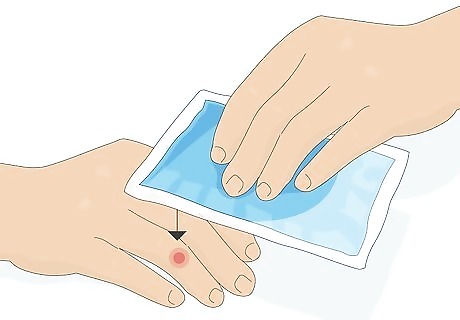
Icing your finger can help reduce the pain and swelling. Wrap the ice pack in a clean cloth so it’s not in direct contact with your skin, which could damage it. Hold the ice pack gently against the injured area to help relieve your pain and reduce any swelling, which can speed up the healing process. Avoid using an ice pack for more than 15-20 minutes at a time so you don’t cause a cold injury to your skin.
Elevate your hand above the level of your heart.
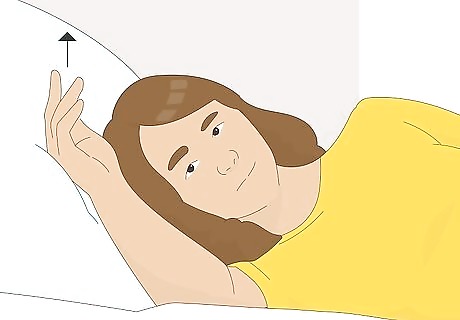
Elevation can help reduce pressure and swelling in your finger. Try to rest your injured finger as much as you can to avoid further injuring it. Keep it raised above the height of your heart, which can limit the amount of blood that flows to the region to keep the swelling from getting worse. For instance, you can prop up your hand on a pillow when you lie down.
Take OTC pain relievers.
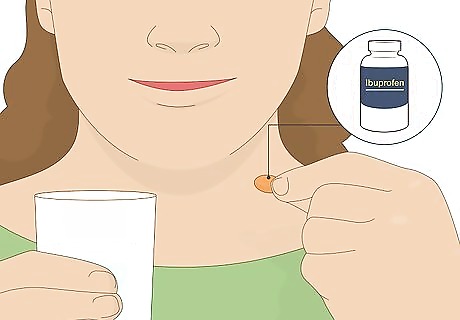
Nonsteroidal anti-inflammatory drugs (NSAIDs) can help. Acetaminophen (Tylenol), naproxen (Aleve), and ibuprofen (Advil) are all part of the NSAID family and can really help with pain and inflammation. Pick some up from your local pharmacy and take them according to the directions on the packaging to ease your symptoms. If you have severe pain, contact your doctor. They may be able to prescribe you stronger pain medication.
Remove any rings that you’re wearing.
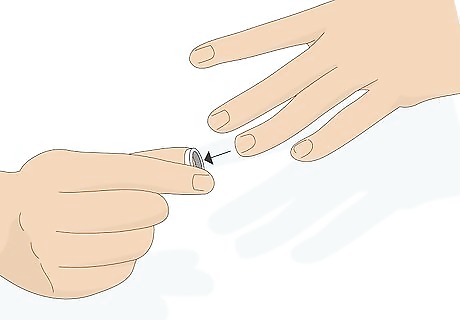
Your finger may start to swell. Though it may not start to swell at first, if you slam your finger hard enough, it’s very likely that it will later. If it swells up too much, it could be difficult to remove any rings you’re wearing, so it’s best to remove them as soon as you can. Not to be dramatic, but it’s possible that your finger could swell up so much that your rings could cut off circulation. It’s better to take them off to be safe.
Try to distract your mind from the pain.
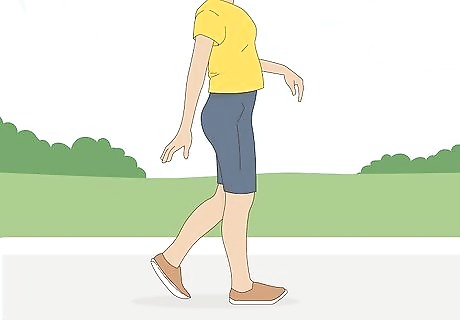
Take a walk, think about something else, or do whatever you can. If you’re really frustrated after injuring your finger, you can reduce the pain by taking your mind off of it for a bit. Do whatever works for you. You can take a short walk around the block, focus on something you need to do later, or whatever you can use to distract yourself. It may help settle your mind.
Apply firm pressure for 10 minutes over any bleeding cuts.
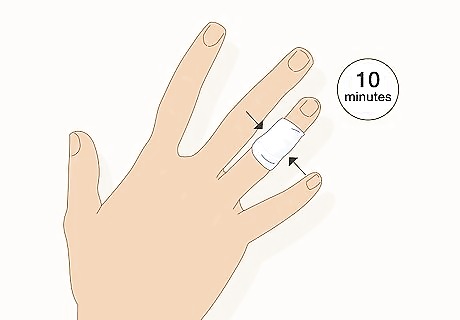
Press sterile gauze over any cuts to stop the bleeding. If you slammed your finger so hard that it actually split the skin and started bleeding, you need to address the bleeding first. Take some sterile gauze and apply it directly to the bleeding area. Keep applying firm pressure for at least 10 minutes or until the bleeding stops.
Clean any cuts with soap and water.
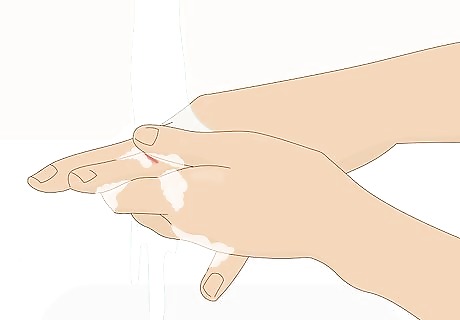
Spend a good 5 minutes removing any dirt from the wound. Once the bleeding stops, you need to clean the open wound to help prevent a potential infection. Wash the wounded area with nice, warm water and soap to clean it up well. It may sting to wash any cuts on your fingers at first, but it’s really worth it in the long run.
Apply antibiotic ointment and wrap cuts in a bandage.

It can help prevent infections and protect the wounded area. Use a simple, over-the-counter (OTC) antibiotic ointment and apply it generously to the open wound. Then, take a bandage (like a Band-Aid) and wrap it securely, but not too tight over the area to keep it protected and to help it heal. You don’t need to use an antibiotic ointment or a bandage if you don’t have any cuts or scrapes. If the skin is open and won’t stop bleeding you need to see a doctor.
Take a few deep breaths.

It can help take the sting out of the initial pain. There’s no way around it—shutting a door on your finger hurts! Before you react with anger or start shouting, take a quick moment to just breathe. Inhale deeply through your nose, hold the breath for a few seconds, then slowly release it. Take a few more breaths to calm yourself down before you address the injury. If it helps, try focusing on a word or a phrase while you breathe. For instance, you can picture the word “calm” or “relaxed” in your mind while you take your big breaths.
Don’t try to drain blood under your fingernail.
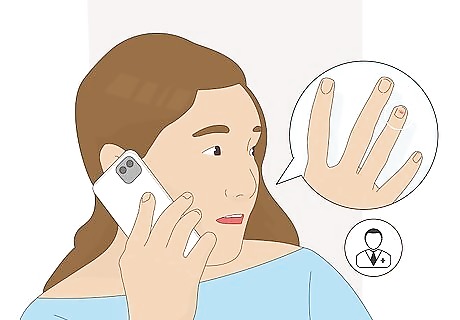
Contact your doctor first to see what they recommend. If blood starts to pool under your fingernail after a door is shut on it, reach out to your doctor. They may tell you to leave it alone and allow your body to heal itself. But if the pressure and pain are too much, they may ask you to come into their office so they can safely drain it.
See your doctor if you think your finger is broken.

Get your finger examined if the pain is severe or you can’t straighten it. A bent finger that you can’t fully extend is a sign of a fracture. Your doctor will be able to examine your finger to see how serious the damage is. They may splint your finger and prescribe pain medication. It’s important that you address the problem as quickly as you can so the damage isn’t permanent. Always ask your doctor before you use a splint. Splints are medical devices that keep a bone from moving, and they can be useful for minor fractures that can occur if you slam your finger in a door. But they can also cause future problems if you use one when it wasn’t needed.
Watch for fever and an increase in pain and swelling.
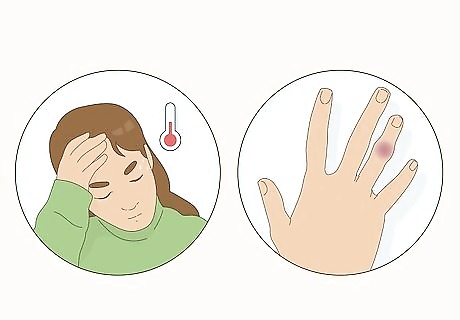
These symptoms could be signs of an infection or a more serious fracture. If your finger starts to hurt you more or if the swelling continues to get worse, the injury may be more serious than you initially thought. Additionally, if you develop a fever or if you see red streaks in the skin around your injury, it could be a sign of an infection. See a doctor for treatment before the problem gets any worse.













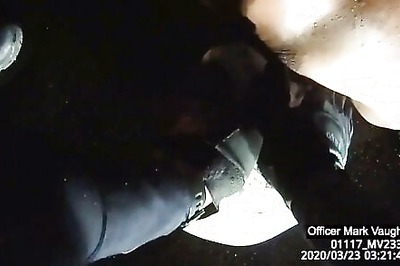





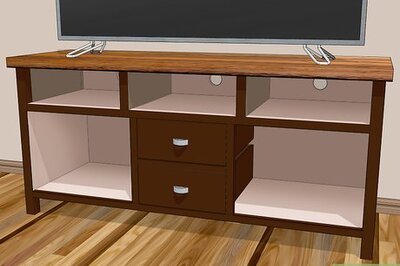
Comments
0 comment